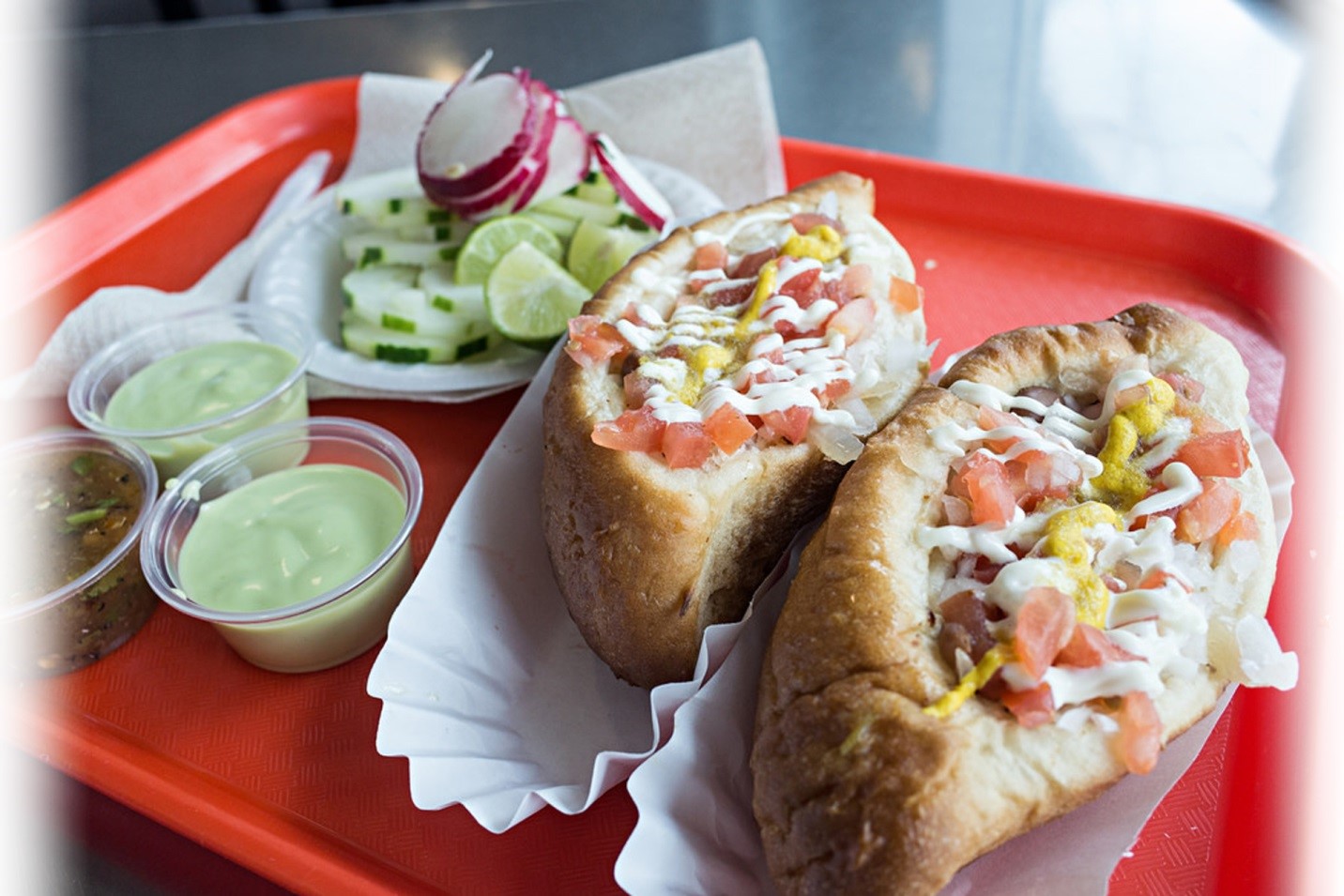Cultural Transformation and the Authentic Sonoran Dog

Our summer blog series “Perspectives from Anthropology of Food” presents work written by the students in the summer Anthropology of Food class (ML 641) in which they reflect on current issues, discuss assignments they have worked on, or address topics of particular interest to them. Today’s post is from Gastronomy student Karl Koch.
In this week’s classes, we’ve discussed the role of food in cultural transformation, which often led to the topics of authenticity, tradition, and “cuisine.” The gist is that cultures continue to adapt over time, spurred by new cultural, political, or economic stimuli, and foodways change as a result. Traditions and food rituals change, authenticity becomes more subjective, and cuisines are developed as intentionally put-forth products of culture, often for outsiders to be able to recognize. Many readers may be familiar with how formerly alien New World crops have become staples in Old World cultures in relatively recent history, like the example of Italian food and tomatoes, or Irish food and potatoes. The list goes on. If we held cultures to strict standards of tradition without the infusion of new ingredients and foodways, Southeast Asian foods would be without their signature spicy chili peppers. National Ethiopian cuisine would never have been created out of different regional foods and codified under the 19th-century reign of Empress Taytu, in part to emulate European monarchies and the elite foods they ate (McCann 2010: 64-99). The pre-contact Hawaiian luau would be nearly unrecognizable to contemporary residents of the island, whether ethnically Hawaiian or descended from the many immigrant groups that have come to call the islands home (O’Connor 2008: 167-168). People in the UK would not have the sugar to put in their tea!
The point is that cultures and their foodways are continuously changing. Nowhere was this more apparent to me than in my experience of living in Tucson, Arizona last year. Working at a small Catholic school on the predominantly Latinx south side of town, I was privileged to be exposed to many new foods through the generosity of others. Menudo, chilaquiles, the best pork lard-laden refried beans—these foods fit my expectations of traditional Mexican fare. But I also learned about the particularities of Sonoran foodways as apart from an overarching “Mexican cuisine.” For example, Sonoran tamales typically include a single green olive in the center, which is quite unusual compared to tamales from other regions of Mexico. But I was most intrigued by the so-called Sonoran dog, offered at the near-omnipresent street carts and food trucks. A bacon-wrapped hot dog in a fluffy, sweet bun, overloaded with beans, tomatoes, avocados, mustard, and mayonnaise, the Sonoran dog became a quick favorite of mine. But was this traditional? Was it authentic?
For the residents of Tucson and elsewhere in the Arizona-Sonora region, yes. True, the American ballpark-staple hot dogs may originate in the Austrian capital of Vienna (Wien in German, people from which are called Wieners). And true, mayonnaise may be some French-origin sauce that is now a typical sandwich condiment. But in this mash-up of cultures, you get a uniquely Mexican-American product. As Ted Robbins reports for NPR, the Sonoran dog and other borderland foods like fish tacos, chimichangas, and margaritas have spread both north and south (2009). One hundred years ago, tortilla chips would have been just as unfamiliar in Mexico City as in Chicago. To this extent, the Latinx people of Tucson may share more cultural practices and foodways with the people of southern Colorado than in Oaxaca in southern Mexico (see Carole Counihan’s A Tortilla is Like Life: Food and Culture in the San Luis Valley of Colorado, 2009).
With what I have learned through this course, I can now see how the people of Tucson navigate different identities and interact with multiple layers of overlapping cultures: Mexican, Sonoran, American, indigenous Tohono O’odham and Pascua Yaqui. As E. N. Anderson notes in his chapter on foods and borders in Everyone Eats, “food and foodways have been internationalizing for centuries” (2005: 208). So while a Sonoran dog may initially strike an outsider like myself as alien or jarring due to previously held notions of Mexican cuisine, the Sonoran dog is not any less authentic than menudo or chilaquiles. Yes, it is a hybridization of American and Mexican foodways, but the Sonoran dog is a perfect example of how cultures create something new out of different sources. Cultures and their foodways are dynamic and constantly transforming, especially in borderland cultures. Isn’t that a tradition unto itself?